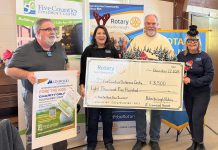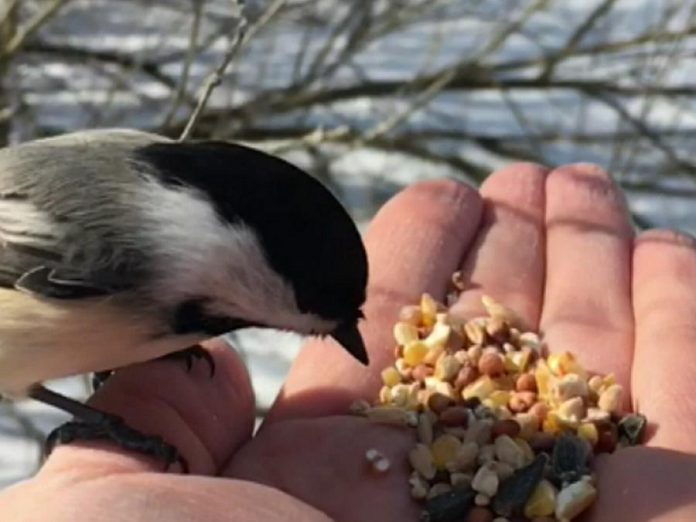
It’s no coincidence that Mental Health Awareness Day falls on November 4th.
This can be a challenging time of year for taking care of our mental health, and the ongoing pandemic does not help.
If you find yourself feeling down, here are a few happiness suggestions to consider.
1. Awe walks in nature
We already know that spending time in nature benefits to our mental and emotional health.
Many studies have demonstrated this, including the 2015 report Green City: Why Nature Matters to Health – An Evidence Review. This report found a consistent relationship between exposure to green space and improved mental health.
How exactly do we find “green space” in November, you might ask? Right now, things are more brown and bare than green.
A recent study, however, demonstrates that benefits of time spent in nature have more to do with our intentions than the seasons. The study compared two groups of adults. Both groups were asked to take 15 minute walks every day for eight weeks. The first group was given no instructions about how to take those walks, but the second group was told to find “awe” or “wonder” in their natural surroundings.
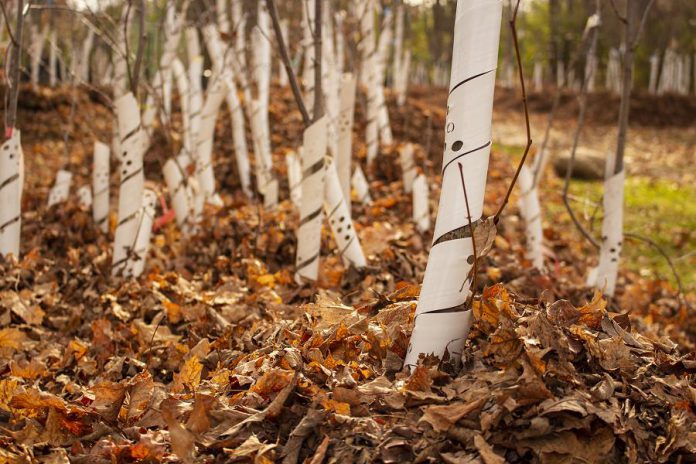
As a result, that second group demonstrated “greater joy” during their walks and “measurably broader smiles” than the first group. The second group also demonstrated “greater decreases in daily distress over time” as well as greater increases in positive emotions and feelings of social connection.
Two great ways to enjoy awe walks at this time of year are by wondering at silence and darkness.
There is something soothing about the silence of a forest or wetland in late fall. The leafless trees are quiet. Most songbirds have migrated. The frogs are hibernating.
In his lovely book Nature’s Year in the Kawarthas, local naturalist Drew Monkman describes November beautifully as a “hush upon the land.” I think that silence is a gift, especially in troubled times.

In 2011, the World Health Organization reported on a 10-year study of environmental noise in Western Europe. They concluded that “there is overwhelming evidence that exposure to environmental noise has adverse effects on the health of the population,” including cardiovascular disease, cognitive impairment in children, sleep disturbance, tinnitus, and annoyance.
That WHO study ranked traffic noise as second only to air pollution amongst environmental threats to public health.
Take some time to get away from traffic noise. Go for a bike ride (or drive) away from busy roads for a quiet hike and be in awe of the silence and peacefulness.
Like noise pollution, light pollution can also adversely affect our health by disrupting our sleep. Luckily in Peterborough we can more easily enjoy darkness than our big-city neighbours closer to Toronto. Stargazing is good even in backyards and parks just outside downtown Peterborough.
The night sky is awesome right now. After the time change, clear evenings are perfect for awe walks in a nearby park. Stop, look up, and feel awe at the billions of stars in the Milky Way.
2. Feed the birds
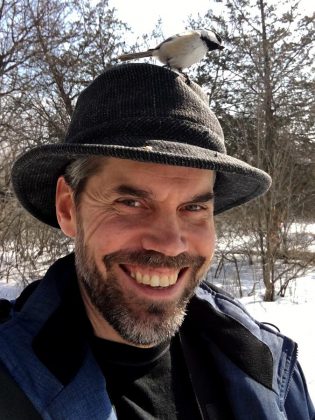
Another way you can experience awe in nature at this time of year is by connecting with birds in your backyard or nearby nature areas.
The black-capped chickadee is a great bird to connect with at this time of year and throughout the winter.
You can learn more about the chickadee in this Bird of the Month profile at the Pathways to Stewardship & Kinship website.
Jacob Rodenberg, executive director of Camp Kawartha, recently wrote a guest blog post called Bird whispering for Ontario Nature, sharing how you can talk with chickadees.
If you want to get really close, check out Jacob’s “Speaking Chickadee” video below from March 27th, where he shows how you can feed chickadees from your hand!
VIDEO: Nature Note 1 – Speaking Chickadee
3. Get cozy
Maybe you remember the concept of “hygge” (pronounced “hoo-guh”) from a January 2019 GreenUP column.
Meik Wiking, CEO of the Happiness Research Institute, explains the benefits of “hygge” like so: “Hygge is about an atmosphere and an experience, rather than about things. It is about being with the people we love, a feeling of home, and a feeling that we are safe and shielded from the world so we can allow ourselves to let our guard down.”
We have had our guard up against COVID-19 for months. We may not be able to gather with all the people we love, but we can still do simple things in our spaces to get cozy and enjoy some “hygge.”
Our natural neighbours are also getting cozy right now. I was excited to discover a fun Squirrel Nest Game in the Pathway to Stewardship & Kinship e-newsletter last month. In this game, you build nests of dry leaves and use a thermometer to see which one works best. We had lots of fun building and testing our nests.
4. Travel vicariously
With travel limited because of COVID-19, it feels nice to reflect upon past adventures and dream of possible future adventures.
One fun way I’ve enjoyed dreaming of travels is by following the journeys of different animals that call Ontario home during the summer but migrate elsewhere during our winter. Following these journeys vicariously also builds my appreciation for how important it is that we respect and protect local habitats, and how remarkably inter-connected our global ecosystems are.
Each year, as we watch the milkweed grow and bloom, we marvel at the amazing metamorphosis and multi-generational migrations of monarch butterflies.
Last year I enjoyed travelling vicariously with the incredible Monarch Ultra Relay that followed the 4000-plus-kilometre migratory path of monarch butterflies from Peterborough to the rare oyamel fir forests in the mountains of Mexico.
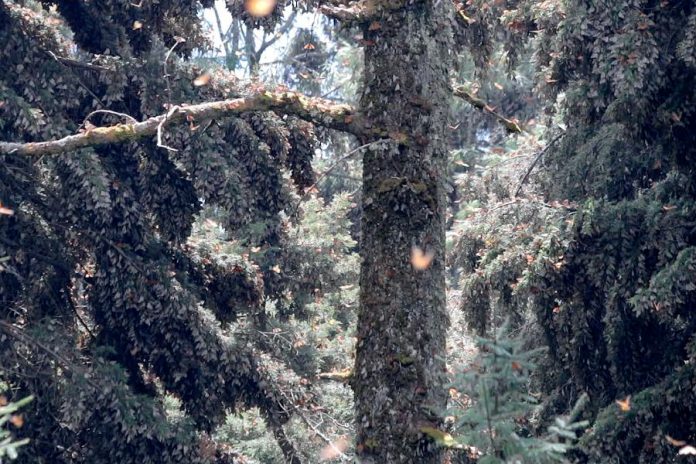
If you’re feeling wanderlust, I recommend you take a scroll back through the 2019 dispatches of the Monarch Ultra at themonarchultra.com. That journey is a remarkable celebration of a species unlike any other on this planet.
It is also a celebration of sharing cultures and collective efforts to protect this species across three nations.
Enjoy your daily 15 minutes of awe in nature this November, and try to keep it going right through into 2021. I hope it brings you happiness and good health.
If you or someone you know is in crisis or needs help, the Four County Crisis Line is available 24/7 at 705-745-6484 or toll-free at 1-866-996-0991. The Four County Crisis Line provides free, confidential mental health crisis intervention support over the phone, for people 16 years and over. They will assist you in dealing with an immediate crisis, and provide support and referrals to appropriate resources.




